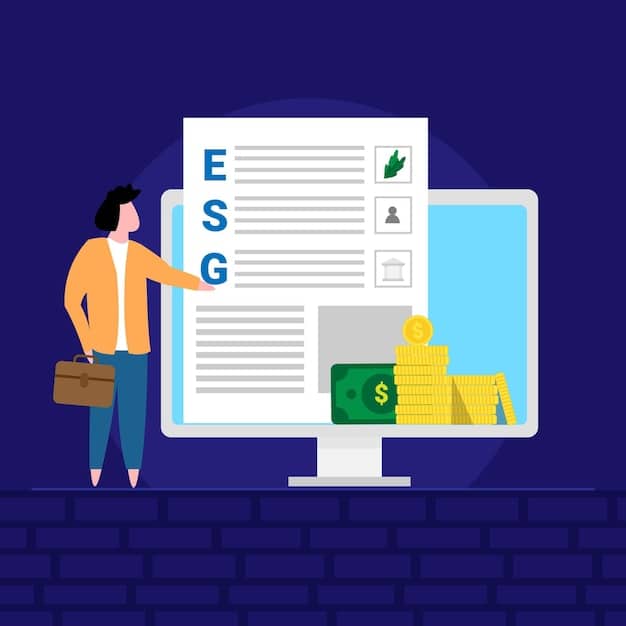Disability Benefits 2025: Eligibility & Application Guide

Understanding the eligibility requirements and application process for disability benefits in 2025 is crucial for those seeking financial and medical support due to a disabling condition in the United States.
Disability Benefits: Understanding Eligibility and Application Process in 2025
Navigating the complex landscape of disability benefits: understanding eligibility and application process in 2025 can feel overwhelming. This guide breaks down the essential information you need to know to determine your eligibility and successfully apply for these vital benefits in the United States.
Understanding Disability Benefits Programs
Disability benefits programs provide financial assistance and healthcare coverage to individuals who are unable to work due to a disability. In the United States, the primary programs are Social Security Disability Insurance (SSDI) and Supplemental Security Income (SSI). Understanding the differences between these programs is the first step in determining which one is right for you.
Social Security Disability Insurance (SSDI)
SSDI is designed for workers who have paid Social Security taxes and have accumulated enough work credits. The amount of your SSDI benefit is based on your average lifetime earnings.
Supplemental Security Income (SSI)
SSI, on the other hand, is a needs-based program for individuals with limited income and resources, regardless of their work history. SSI provides a basic monthly payment to help cover essential living expenses.

Both programs require you to meet the Social Security Administration’s (SSA) definition of disability, which is the inability to engage in any substantial gainful activity (SGA) due to a medically determinable physical or mental impairment that has lasted or is expected to last for at least 12 months, or is expected to result in death.
- SSDI is for those with a sufficient work history.
- SSI is for those with limited income and resources, regardless of work history.
- Both require meeting the SSA’s definition of disability.
In conclusion, comprehending the nuances between SSDI and SSI is crucial for candidates seeking disability support, as each program caters to different prerequisites concerning work history and financial status.
Eligibility Criteria for Disability Benefits
Meeting the eligibility criteria is essential for receiving disability benefits. The SSA has specific requirements related to work history, income, and medical condition.
Work History Requirements for SSDI
To qualify for SSDI, you must have worked long enough and recently enough to accumulate a certain number of work credits. The number of credits you need depends on your age at the time you become disabled.
Income and Resource Limits for SSI
SSI has strict income and resource limits. In 2025, the income limit is typically the same as the federal benefit rate (FBR), which may be subject to change. Resources, such as bank accounts, stocks, and bonds, cannot exceed a certain amount. Some assets, like your primary home and vehicle, are usually excluded.
The SSA maintains a “Listing of Impairments” (also known as the “Blue Book”), which describes medical conditions that are considered severe enough to prevent a person from performing any substantial gainful activity. If your condition meets or equals a listing, you may be approved for disability benefits.
- SSDI requires sufficient work credits based on age.
- SSI has strict income and resource limits.
- The SSA’s “Blue Book” lists severe medical conditions that can qualify for disability.
In summary, eligibility necessities for disability benefits encompass work history mandates for SSDI and income/resource caps for SSI, alongside fulfilling the SSA’s benchmarks for defining a disability.

The Disability Benefits Application Process
The application process for disability benefits involves gathering documentation, completing the application form, and providing medical evidence. You can apply online, by phone, or in person at a Social Security office.
Gathering Documentation
Before you begin the application, gather all necessary documents, including your Social Security number, birth certificate, medical records, and work history information. Having everything organized will streamline the process.
Completing the Application Form
The application form asks for detailed information about your medical condition, work history, and daily activities. Be as accurate and thorough as possible when completing the form.
Providing Medical Evidence
Medical evidence is crucial to your disability claim. Include all relevant medical records, such as doctor’s reports, hospital records, and test results. The SSA may also request additional medical examinations or evaluations.
From gathering necessary documentation—Social Security number, birth certificate, medical records, and work history details—to accurately completing the application form with comprehensive information on medical condition, work history, and daily routines, every step is essential. Submitting extensive medical evidence, including doctor’s reports, hospital records, and test results, further bolsters the claim.
In conclusion, a methodical procedure, bolstered by meticulous documentation and all-encompassing medical proof, significantly enhances the odds of a triumphant disability application.
Medical Evidence and the Importance of Documentation
Medical evidence is the cornerstone of any disability claim. The SSA relies heavily on medical records to determine whether you meet the definition of disability. Ensure your medical documentation is comprehensive and clearly demonstrates the severity of your condition.
The SSA evaluates medical evidence based on several factors, including the source of the information, the consistency of the evidence, and the supportability of the findings. Medical opinions from treating physicians are often given more weight, but the SSA will also consider opinions from other medical professionals.
If your medical records are incomplete or unclear, the SSA may request additional information or schedule a consultative examination (CE). A CE is an examination performed by a doctor chosen by the SSA, and the results are used to help the agency make a decision on your claim.
- Comprehensive medical records are crucial for a successful claim.
- Medical opinions from treating physicians are often given more weight.
- The SSA may request a consultative examination (CE) if needed.
Ultimately, exhaustive medical documentation, highlighted by opinions from treating doctors, forms a crucial element in advocating for a triumphant disability claim.
Appealing a Disability Benefits Denial
If your disability claim is denied, you have the right to appeal the decision. The appeals process consists of several levels, including reconsideration, a hearing by an administrative law judge (ALJ), a review by the Appeals Council, and a federal court lawsuit.
Reconsideration
The first step in the appeals process is reconsideration, where your case is reviewed by someone who did not participate in the original decision. You can submit additional evidence at this stage.
Hearing by an Administrative Law Judge (ALJ)
If your reconsideration is denied, you can request a hearing before an ALJ. The ALJ will review your case and may ask you questions about your medical condition and work history. You can also present testimony from witnesses.
Appeals Council Review
If you disagree with the ALJ’s decision, you can request a review by the Appeals Council. The Appeals Council can either deny your request for review, overturn the ALJ’s decision, or remand the case back to the ALJ for further consideration.
Appealing a benefits denial involves several tiers, initiating with reconsideration. If declined, the subsequent phase entails a hearing before an ALJ, permitting testimony and provision of supplementary proof. Should the ALJ’s verdict be unsatisfactory, an allure to the Appeals Council follows, presenting potential for reversal or remand.
In conclusion, grasping the layered appeals procedure is vital for candidates challenging the repudiation of their disability benefits. Each degree extends opportunities for reassessment and the submission of further substantiation.
Tips for a Successful Disability Benefits Application
Improving your chances of being approved for disability benefits requires careful planning and execution. Here are some tips to help you navigate the process successfully.
- Start the application process as soon as possible.
- Be thorough and accurate when completing the application form.
- Provide detailed medical evidence from all your treating physicians.
- Follow up with the SSA to ensure they have all the necessary information.
- Consider seeking assistance from a disability attorney or advocate.
By adhering to these guidelines, candidates can augment their prospects of acceptance for disability benefits, facilitating a smoother and more triumphant voyage through the application course.
In summary, initiating the application promptly, being comprehensive and precise in filling out the form, furnishing thorough medical substantiation, maintaining communication with the SSA, and contemplating assistance from a disability attorney collectively augment likelihood of a prosperous outcome.
| Key Point | Brief Description |
|---|---|
| ✅ Eligibility | Meeting SSDI work history or SSI income/resource limits. |
| 📝 Application | Gather documents, complete forms, and provide medical evidence. |
| 🏥 Medical Evidence | Comprehensive records demonstrating condition severity. |
| ⚖️ Appeals | Reconsideration, ALJ hearing, Appeals Council review. |
Frequently Asked Questions
▼
SSDI is for those who have worked and paid Social Security taxes, while SSI is a needs-based program for those with limited income and resources, regardless of work history.
▼
You can apply online, by phone, or in person at a Social Security office. Gather all necessary documentation before starting the application process.
▼
You have the right to appeal the decision. The appeals process includes reconsideration, a hearing by an ALJ, and a review by the Appeals Council.
▼
Provide detailed medical evidence from all your treating physicians, including doctor’s reports, hospital records, and test results.
▼
A disability attorney can help you navigate the complex application process, gather medical evidence, and represent you at hearings and appeals.
Conclusion
Understanding the eligibility requirements and application process for disability benefits in 2025 is essential for those in need of financial and medical support. By gathering the necessary documentation, providing comprehensive medical evidence, and seeking assistance when needed, you can increase your chances of a successful application.





